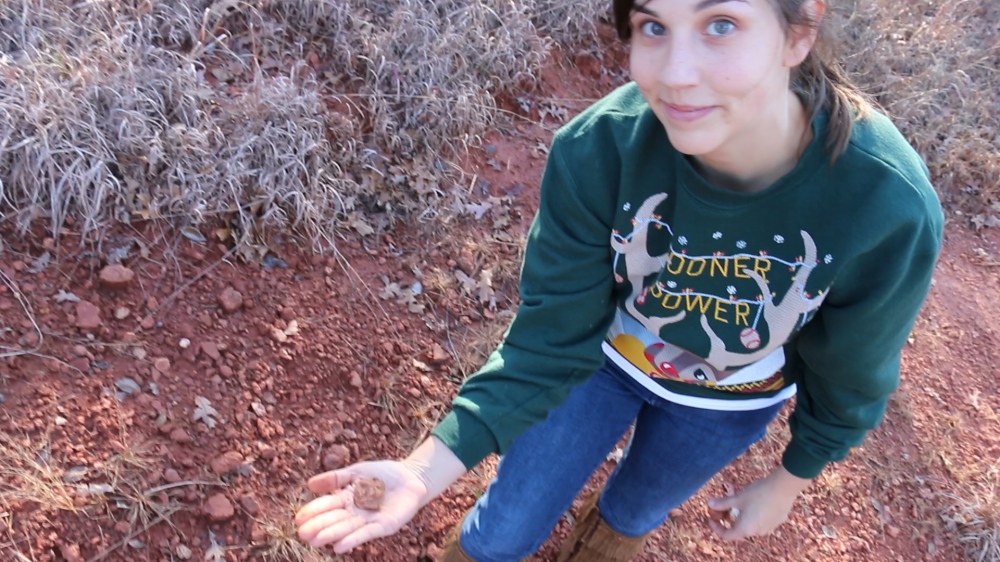By Jennifer Morris
“We’re going out to part of the Garber Formation to shoot some video and photos.”
“Mmmmmhmmm,” I responded while half-diverting my attention to an email I was writing.
He added, “We might have time to search for rose rocks…”
“Oh yea?” My ears perked up.
I stopped typing and looked up at the speaker, Ted, standing in the doorway.
I had always heard about rose rocks. I knew they were the official state rock of Oklahoma and very unique looking. In fact, I had just finished reading a thorough publication on The Barite Roses of Oklahoma and discovered that rose rocks are roughly equal parts sedimentary rock and mineral (barite) and due to their recurring pattern, often classified as minerals.
So, the rose rock could really be the rose mineral too. It is called the barite rose of Oklahoma by most geologists. But to quote Shakespeare,
“That which we call a rose [rock]
By any other name would [be so amazing]”
I had purchased barite roses before. I distributed them to friends overseas because they were a common feature of the place where I was born and raised. However, it dawned on me that I had never found them in situ.
This was an opportunity to learn…and to eventually share this new knowledge with schools and the public, part of my drive, position, and forté!
“Mind if I come along?”
My interested was peaked. I couldn’t wait to probe the Permian sandstone for small samples of the coveted (and often sold) barite rose.
When we arrived northwest of Thunderbird Lake, I was surprised by how close the location was to work and home. Our first area to inspect was a road cut. Fortunately, road cuts give us an excellent opportunity to investigate an outcrop. Unfortunately, road cuts are precariously close to roads…and cars. Also, they are easy to access, thus usually highly picked over by other rock hounds.
After a little digging into some embankments, we gave up and moved to the other side of the road.
“Look for small nodes and then turn them over…or dig around them,” David, one of our helpful staff geologists instructed.
I spotted a protruding round shaped stone and plucked it from the ground:

Behold! My first barite (petals?) rose find:

After a few more small finds, we moved one last time to a back road, parallel to the main road. Most of the best spots for barite rose hunting are on private property because of the restricted access, because, again, people comb over public areas pretty thoroughly.
This back road was a little more secluded and offered a number of decent-sized specimens.
“When you find one, dig around it and you will probably find others nearby,” was another piece of advice from David.
And it worked!

Some of the most beautiful specimens were stuck in large slabs of Garber Sandstone:
Instead of carving them out, we photographed them and left them. And when we had finished our hunt, we returned all but a few to their former resting places so that others could someday enjoy the same pursuit.

Jennifer Morris Education Outreach and Public Relations Manager


